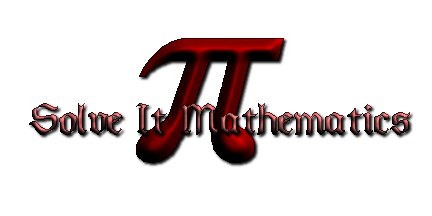

Systems of Two Equations
| There are three results you can get when you solve a system
of equations.
1) One unique solution 2) No solution (inconsistent system) 3) Infinite solutions No, I'm not crazy. You're thinking that I just told you that every answer is the right answer. Not so! This is a very important thing to realize...that you will ALWAYS get one of these results. I'll prove it below. |
|
| Be careful that you don't shortcut the algebra involved just because it is simple. Its much to easy to make mistakes that way | Example 1 - A system of two equations with one unique
solution. Consider the system of equations below.
(1) x + y = 2 (2) -3x + 2y = 9 Please note: there are two equations (hence, "system of two equations") and two unknown variables, x and y. The goal is to solve the system to find the values of x and y. You cannot solve this system for z. If for instance, the system looked liked this: x + y + 7z = 2 -3x + 2y + z = 9 then you would need a third equation, or linear algebra skills, to solve it. The first step is to isolate one of the variables. We choose to isolate y of equation (1). So, solving equation (1) for y y = 2 - x Now, substitute this into equation (2) -3x + 2(2-x) = 9 Multiply through -3x + 4 - 2x = 9 And solve for x -5x = 5 x = -1 Now, substitute this value back into equation (2) to solve for y y = 2 - x y = 2 - (-1) y = 3 And the final solution is x = -1, y = 3 or (-1, 3)
|
| Commentary on Example 1: Note that in this case we found a
single unique solution. This means that any other combination of x and y
values will yield a false equation. Try solving the equation with x = -1
and y = 2.
In order to solve this system, we used the substitution method. The other method involves elementary row operations. |
|
| Elementary row operations are methods
that you can use to eliminate one of the variables in one of the
equations. They are:
1. Multiply one equation by a non-zero constant 2. Add one equation to the other When you use elementary row operations,
|
|
| Example 2 - Solve Example 1 using elementary row
operations.
(1) x + y = 2 (2) -3x + 2y = 9
|
|
© 2006, Spitfire Science
![]()
This work is licensed under a Creative Commons Attribution-NonCommercial-NoDerivs 2.5 License.